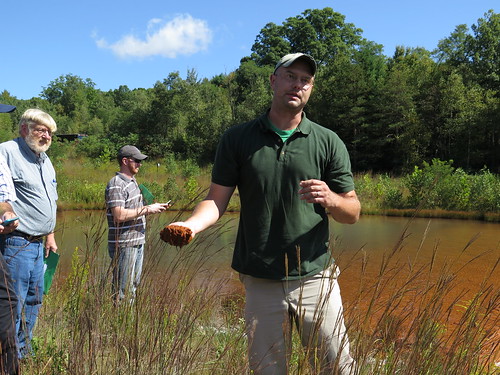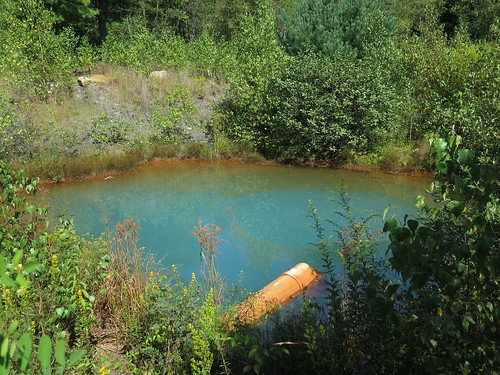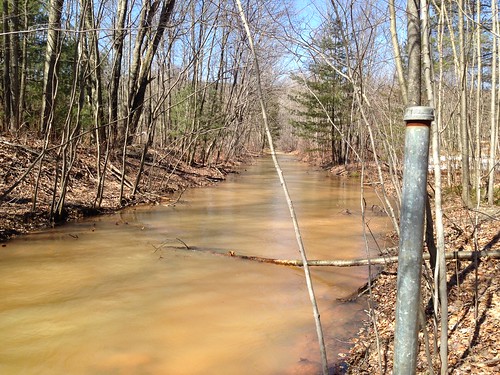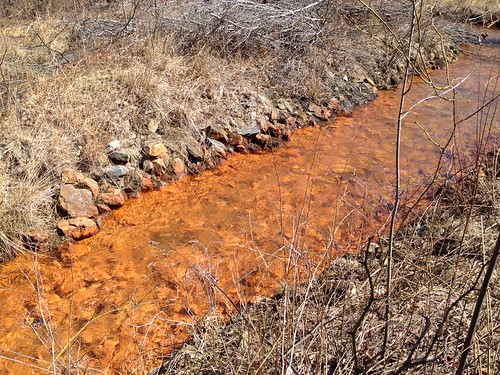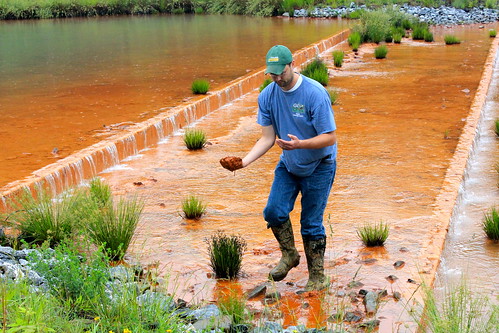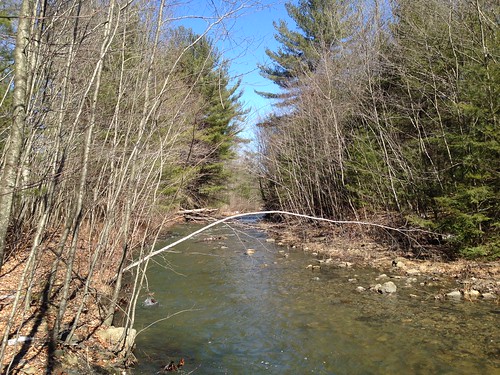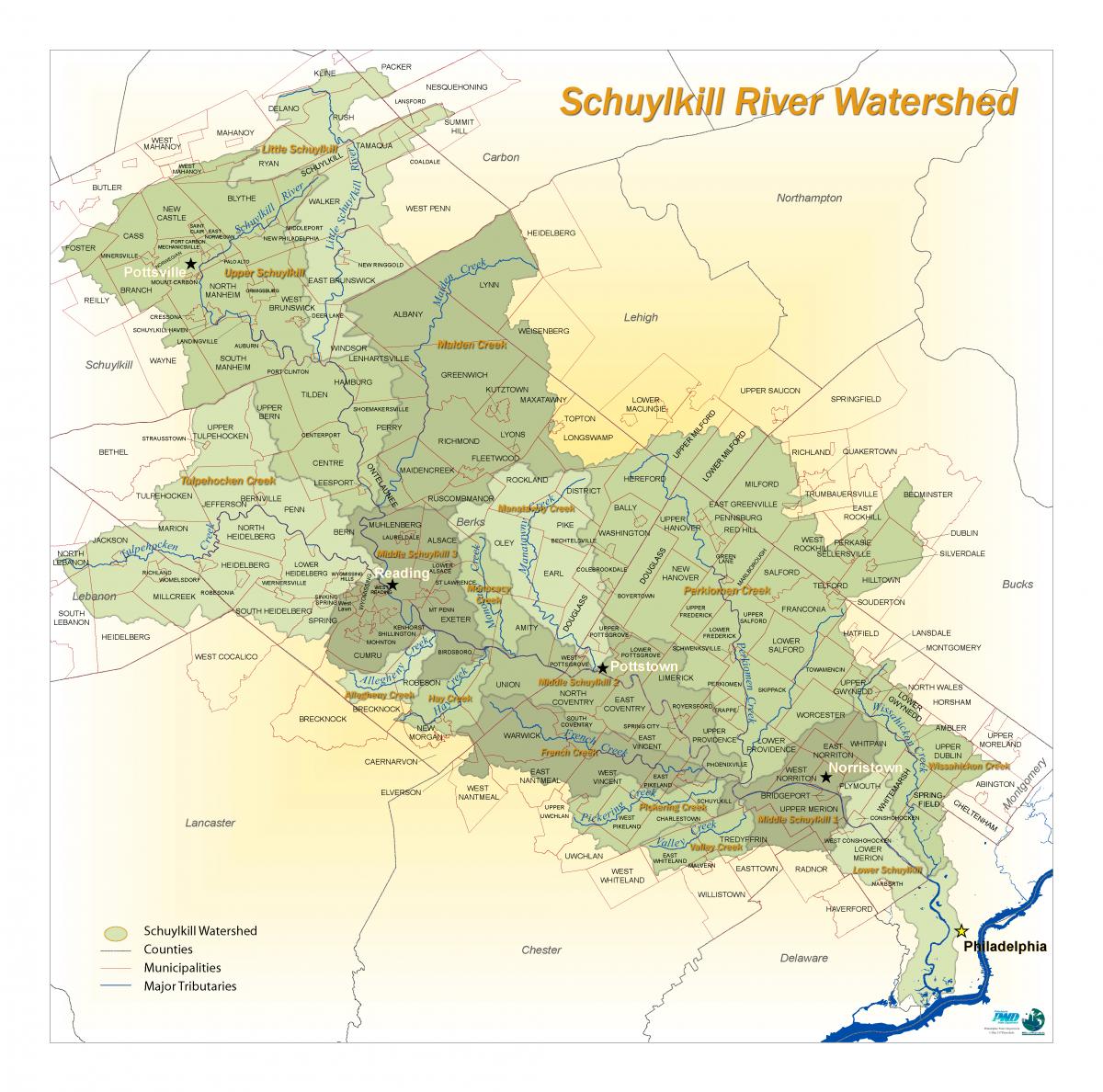Overview
Abandoned Mine Drainage
Abandoned Mine Drainage (AMD) is the primary cause of pollution in the Schuylkill River headwaters and the biggest source of metals downstream. AMD is created deep below the ground in abandoned coal mines where water fill tunnels that were once kept dry by active pumping operations. Water and oxygen react with lingering iron sulfide (pyrite) producing metal-laden and sometimes highly acidic discharges that exit the tunnels in orange and silver plumes, easily visible in waterways.
AMD interferes with plant growth and reproduction of aquatic animals by leaving deposits of iron and other metals on the streambed. Acidity and metals impair drinking water resources and quickly corrode pipes and industrial mechanisms. Waterways affected by AMD can hinder tourism and recreational opportunities like fishing, boating, and swimming.
AMD treatment is expensive, but so is the economic and environmental damage that results from untreated AMD. The Schuylkill Action Network (SAN) AMD Workgroup was formed to provide support and coordination among partners working to address AMD. Their projects restore and protect waterways, providing eco-based economic development and recreational enjoyment for present and future generations.
Workgroup Co-Chairs:
- Dan Koury, PA Department of Environmental Protection
- Alexa Smith, Schuylkill Conservation District
Gallery
Projects
This project entailed installing a passive treatment system for the water flowing from the Bell Colliery Drift. As is the case with many abandoned mines, water gathers in the underground tunnels where it “picks up” metals and, eventually, flows into the Schuylkill River. In addition to the metals themselves having an undesirable effect on the river, Bell’s AMD water is acidic.
In early December 2010, the Schuylkill Headwaters Association (SHA) completed construction of the Glendower Breach Restoration Project. This project restored a pond breach along the West Branch Schuylkill River, preventing legacy sediment from entering the stream and negatively affecting water quality.
Rainwater and stormwater was diverted away from where it previously mixed with abandoned mine drainage and to a nearby stream.
At the Mary D borehole, water flowed from mines into the Schuylkill River, polluting the river with abandoned mine drainage (AMD). Schuylkill Headwaters Association sought to create a passive treatment system that would allow the metals to naturally drop out of the discharge into a wetland before reaching the river.
In Norwegian Township, a large underground area drains into the West Branch of the Schuylkill River. Before 2002, this included Abandoned Mine Drainage (AMD), which negatively impacted the area’s eco-system. The Reading & Blue Mountain Northern Railroad Company leased a nearby floodplain to Schuylkill Headwaters Association so that they and Rettew Associates, Inc. could build a passive treatment system that would prevent this from happening.
The Schuylkill Headwaters Association received a grant award for over $60,000 to complete upgrades to three AMD treatment systems in Schuylkill County.
Abandoned Mine Drainage (AMD) from the Pine Forest Mine used to flow into Mill Creek discharging aluminum, iron, manganese, and acidity. Because it is a tributary of the Schuylkill River headwaters, the AMD would then flow into the Schuylkill River.
Every minute, the Oxic Limestone Drain (OLD) system at the Reevesdale South Dip Tunnel treats approximately 900 gallons of Abandoned Mine Drainage (AMD) that would otherwise flow directly into Wabash Creek, a tributary of the Little Schuylkill River. This treatment reduces the amount of aluminum, iron, manganese, and acidity present. OLD's are buried limestone ditches into which AMD water is directed. As it passes through, the water dissolves limestone, increasing the alkalinity and pH levels of the water. This lowers the acidity.
The Silver Creek AMD treatment system was completed in July, 2010. A passive treatment system was installed, which includes five pools. The AMD water is collected in the scour pool, allowing it to slow down. As it leaves the scour pool, the water is spread across a wide area in a sheet flow.
During the fall of 2010, the Wheeler Run flume replacement project was completed and is now preventing clean water from getting polluted. Wheeler Run, which is a small stream that drains into the West Branch of the Schuylkill River, was channeled through a wooden flume to prevent water from entering the underground mine workings of the Pine Knot Mine. The original stream bed no longer existed due to legacy mining practices. The Wooden Flume deteriorated over many decades of operation and was no longer able to keep the water out of the mine workings.
Every day, tunnels underlying the 20 square mile Pine Knot Tunnel study area drain 35 million gallons of Abandoned Mine Drainage polluted water into Schuylkill River headwaters. This project entailed locating recharge sites of the Pine Knot mine pool. Utilizing funds from the Schuylkill Watershed Initiative Grant, the Pine Knot Tunnel project provided a conceptual design and feasibility study for remediation and mitigation of water pollution attributed to AMD at a collection of sites. Potential project areas were identified, and treatment and diversion project designs were implemented.
Related Documents
| Name | Upload Date | Download | View |
|---|---|---|---|
SAN Abandoned Mine Drainage Overview |
January 9, 2018 | Download | View |
EPA Brownfields Funding - Stephanie Branche |
April 14, 2020 | Download | View |
OSMRE WCAP presentation - Robbie Fulton |
April 14, 2020 | Download | View |
Kaska Silt Dams Project Update - Karl Russek |
April 15, 2020 | Download | View |
Big Creek Presentation_Silldorff_July2022 |
August 5, 2022 | Download | View |
Conway_July 2023_Presentation_CREM |
August 4, 2023 | Download | View |
2023 Bus Tour Itinerary |
August 21, 2023 | Download | View |
SAN Connections Spring 2024 |
May 13, 2024 | Download | View |
SAN AMD Workgroup Agenda August 2024 |
July 9, 2024 | Download | View |
Bus Tour Itinerary 2024 |
July 26, 2024 | Download | View |


